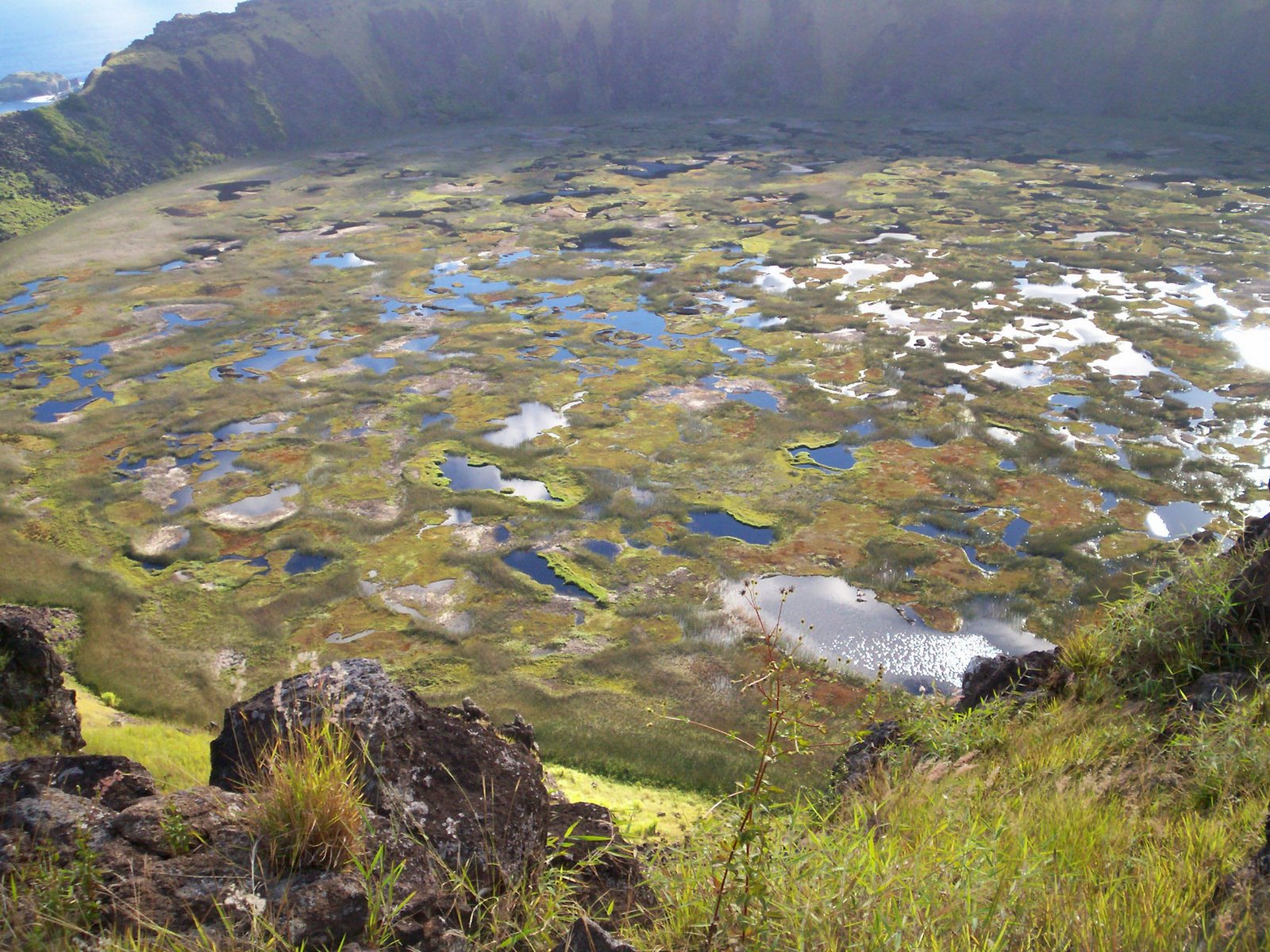 Crouch at the high-water mark on almost any Hawaiian beach and you'll find a kaleidoscope of color—not just the tans, greens and blacks of corals and volcanic stone, but also the whites, oranges, blues, reds and yellows that represent bits of plastic.
Crouch at the high-water mark on almost any Hawaiian beach and you'll find a kaleidoscope of color—not just the tans, greens and blacks of corals and volcanic stone, but also the whites, oranges, blues, reds and yellows that represent bits of plastic.
Scientists have long known that these are a mechanical problem for wildlife. That is, they fill the bellies of birds so they can't eat anything else and die.
But increasingly, it is becoming clear that they're also potentially a toxic problem—that toxic organic compounds are associated with the bits of plastic as they drift on the seas and wash up over Island reefs.
The California-based Algalita Foundation has helped conduct considerable research on drifting pollutants. University of the Pacific researchers Lorena Rios and Patrick Jones, along with Capt. Charles Moore, recently provided new insight in a paper, “Pacific organic pollutants carried by synthetic polymers in the ocean environment,” printed in the Marine Pollution Bulletin. Moore is the founder of Algalita and skipper of its research ship, Alguita.
Their research found that some plastics in the marine environment seem to absorb chemical pollutants from the environment. The research does not go so far as to show that these pollutants then get into the tissues of animals that eat the plastic—that is a study to be done later.
The problem of plastics in the ocean can't be overstated. The authors say that roughly 70 percent of marine litter is plastic. Previous studies show that plastic significantly outweighs plankton in much of the eastern Pacific.
A plastic toy, bottle or piece of fishing gear breaks in ultraviolet radiation from the sun into smaller and smaller pieces, but effectively never disappears from the environment, the authors write.
“They are not biodegradable in any practical human scale of time,” they write.
What hasn't been well studied is the relationship between these drifting and beach plastic chunks and organic pollutants. The ones studied include organo-chloride pesticides like DDT, industrial chemicals called PCBs or polychlorinated biphenyls, and polycyclic aromatic hydrocarbons (PAHs), which can be created by incomplete burning of fossil fuels, and some of which are used in chemical manufacturing.
This isn't the chemicals that are associated with plastic items when they are made, but rather chemicals that “stick” to the plastics as they move through the environment. That's a problem, because many forms of marine life, including fishes, seabirds, turtles and others, eat bits of plastic, either inadvertently as part of their regular feeding, or because they mistake bits of plastic for real food.
The researchers collected plastics, mainly polyethylene and polypropylene, from beaches in the Hawaiian archipelago, California, Mexico, from the puked-up stomach contents of seabirds, and from the surface of the North Pacific. They also collected samples from outdoor industrial sites like Mainland railyards where plastics were spilled during loading.
The plastic debris was then tested for the chemical pollutants. Not all plastic samples had detectable levels of the organic pollutants, but for instance, there was detectable DDT from Kualoa Beach on O'ahu, detectable PCBs on Kamilo Beach on the Big Island, and detectable PAH and PCB on samples from Tern Island on French Frigate Shoals in the Northwestern Hawaiian Islands.
The levels of PCBs at Tern Island was the highest found in any of the samples in the study. Tern Island has a documented PCB problem, associated with a landfill dating to the period when the island was used as a Coast Guard LORAN station.
The authors of this paper say the plastic debris seems to “absorb, accumulate and transport persistent organic pollutants.”
“These plastics are important point sources carrying (persistent organic pollutants),” the researchers write. And they're problems not only for the creature that eats the plastic, but then for the creatures that eat those creatures, and the ones that eat them.
© 2007 Jan W. TenBruggencate






No comments:
Post a Comment